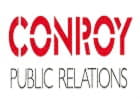In keeping with its 15-year tradition, Birnbach Communications, Inc. (www.birnbachcom.com), an independent PR and social media agency, today issued its annual list of top media and marketing trends for 2017, which are influenced by consumers’ evolving social media habits.
“We compile our annual list of trends affecting technology, B2B, marketing and the media to help our clients navigate the complex and ever-changing communications landscape and engage more effectively with traditional and social media and other influencers,” said Norman Birnbach, president, Birnbach Communications. A major trend for next year is the continued blurring between traditional and social media, which was front and center during the election cycle, as Americans continue to turn to Facebook, Twitter and other social media for their news.”
Here are five of the agency’s top trends for 2017:
- Fake news won’t fade in 2017. When you cut out all the costs involved in actually reporting news, as fake news does, financial sustainability isn’t an issue. Fake news will continue as long as it remains profitable or ideologically effective. It will take more than big brands pull their advertising on fake news sites (or try to get their ads off those sites) to stop fake news. Facebook, along with Twitter and Reddit (not really among the “Big Social”), are taking steps to reduce the spread of fake news. Some critics call “enforcing user guidelines” a form of censorship, and we expect that the Big Social will be accused of doing too much by some and not doing enough by others. Both Facebook, whose advertising tools have made it easy for fake news sites to promote their content, and Google, whose AdSense has enabled fake news sites to monetize their content, indirectly profit from fake news. While both have said they will work to rid it from their platforms, fake news is like spam: the only way to truly kill it, is to have people to stop clicking on those links – but there always seems to be enough people who fall for it to make it worthwhile for the content providers.
- Big Social will evolve in 2017, but not necessarily in a good way. We expect more trolling and twitstorms on social media. The future of Donald J. Trump’s go-to social media platform, Twitter, is very much in doubt. It lost $500 million in 2015, and $1.6 billion since going public. If Twitter is not financially viable as a standalone platform, its survival becomes a real question. Although profitable, Facebook is facing the problems of ad counting and fake news. All of this turmoil will benefit Snapchat, which is already is favored by the millennials, and Gab, described by the New York Times as the social media platform for the alt-right, a “throwback to the freewheeling norms of the old internet, before Twitter started cracking down on harassment and Reddit cleaned out its darkest corners.” From a demographic perspective, we think Snapchat will be the dominant social media platform by 2018, along with Instagram. We also think LinkedIn will thrive as long as it remains (as we think it will) apolitical.
- The media cycle will speed up. There used to be a lag between the time an event took place and the time it could be reported. In the era of social media dominance, it seems to take a nanosecond between an event and the social response to it to hit Twitter, followed by an ensuing twitstorm. This is further fueled by the participation of anyone with the app, as evidenced by the many who felt compelled to stay on top of the developments during the campaign and afterwards, regardless of whether they cheered or jeered. We expect twitstorm, and coverage of those twitstorms followed by outcry to the initial response to be a mainstay of broadcast coverage in 2017.
- The gig economy and the sharing economy will continue to go mainstream. There are people who work in the gig economy who don’t necessarily realize it – including, for example, teachers who tutor after school. We need to more accurately define the gig and the sharing economies (i.e., Uber, which touches on both; as well as Airbnb) and to identify and track meaningful metrics, both to gain an accurate portrait of overall U.S. economy as well as develop appropriate policies regarding taxes, healthcare and social services.
- IoT will continue to open the door to cyberattacks. We saw one major cyberattack via the Internet of Things (IoT) in 2016, and we expect more to occur in 2017. The challenge for IoT companies is to be able to deploy security protocols that are flexible enough so IoT devices in your house (or office or car) can talk to each other, yet also prevent hackers from getting access. We expect there will be much media coverage in 2017 on cyberattacks, in general, whether perpetrated by foreign countries or other parties.
The complete list of more than a dozen predictions is being rolled out on the agency’s blog, PRBackTalk: blog.birnbachcom.com.
About Birnbach Communications
Boston-based Birnbach Communications, an independent PR and social media agency, partners with its clients to strategically navigate the complex and ever-changing communications landscape. The agency enables its client base of growing technology-driven companies, service firms and other organizations to achieve leadership in a crowded business communications market by helping them launch products and services; establish new product categories and drive market demand through media and influencer relations, social media, and thought leadership campaigns. Founded in 2001, Birnbach Communications brings flexible senior-level intelligence and a proven, pragmatic approach to solving clients’ business challenges. Connect with Birnbach: Web: www.birnbachcom.com, Twitter: twitter.com/#!/birnbachcomm; Blog: http://blog.birnbachcom.com/; Facebook: www.facebook.com/BirnbachCommunications | Linkedin: www.linkedin.com/company/birnbach-communications.














